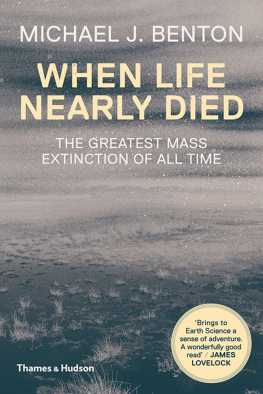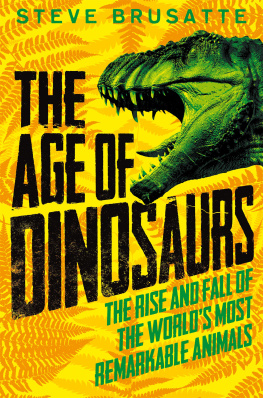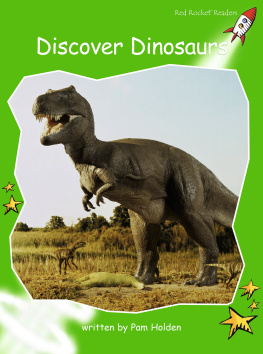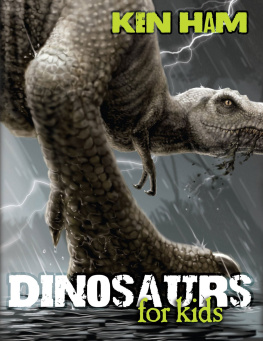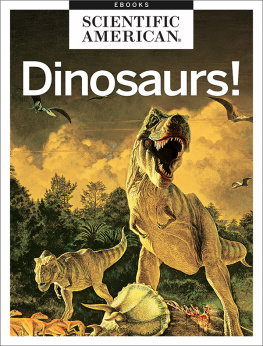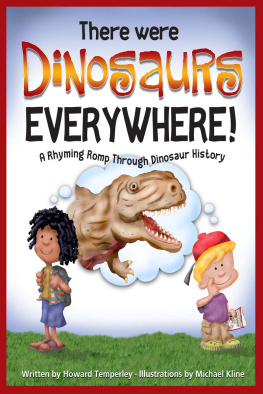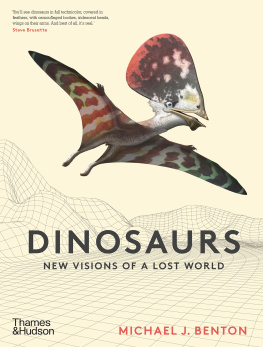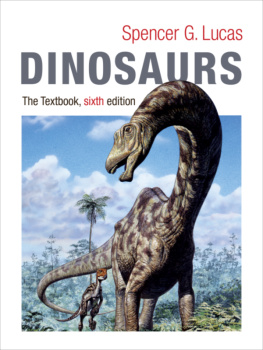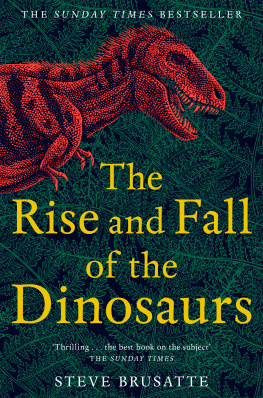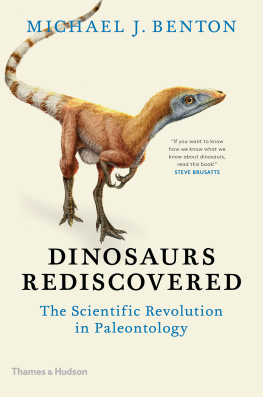


Dedicated to my wife, Mary, and children, Philippa and Donald, for putting up with me.
About the author
Michael J. Benton is Professor of Vertebrate Palaeontology and head of the Palaeobiology Research Group at the University of Bristol, which was identified by the Center for World University Rankings as the top palaeontology research group in the world. He has written more than fifty books, including the standard textbooks in palaeontology and When Life Nearly Died (2015, published by Thames & Hudson), and regularly offers media comment on new dinosaur discoveries.
Other titles of interest published by
Thames & Hudson include:
Thinking Big
Inside the Neolithic Mind
When Life Nearly Died
See our websites
www.thamesandhudson.com
www.thamesandhudsonusa.com
Contents

The geological time scale is an international reference used to document all the rocks on Earth, and based on 200 years of work by the geologists of the world. We use it here as a marker of the divisions of time and their dates. Dinosaurs were on Earth during the Mesozoic they originated in the Triassic, flourished in the Jurassic and Cretaceous, and famously died out at the CretaceousPalaeogene boundary, 66 million years ago. Figures given indicate millions of years ago.
Discovery
I can remember the day 27 November 2008 when Paddy Orr came through from the scanning electron microscope (SEM) lab in Bristol, and said Weve found these regular organelles in the feathers. What do you think they are? I went through, and he, I, and Stuart Kearns, who runs the facility, checked over the tiny chippings from the feathered dinosaurs from China. There they were on the screen rows of slightly distorted spheres deep in the feather tissue. As Stuart rolled the control ball, the field of view changed and wherever we looked there they were
Melanosomes.
In a 125-million-year-old fossil feather.

Spherical melanosomes in a fossilized feather of the dinosaur Sinosauropteryx.
Melanosomes are the tiny hollows inside hairs or feathers that contain melanin. Melanin is a pigment that gives the black, brown, grey, and ginger colours to hairs and feathers. We were the first ever or at least the first on record to have seen evidence of melanosomes in dinosaurs. If we had got it right, this was evidence of the original colour of their feathers. We could say that for the first time we had discovered for sure the colour of a dinosaur.
We were torn by emotions at this point. Our first desire was to rush out and tell the world call the press and shout from the rooftops! On the other hand, as scientists, we are trained to be careful, and we wouldnt want to look foolish by making such a wild claim if the evidence wasnt there. Theres also a whole process behind publishing science, the so-called peer-review process, which ensures you present all your evidence, in detail, and sufficient to pass scrutiny of two or three independent colleagues. Only after publication in a scientific journal do you release your discovery to the mainstream media.
So, we went out for a beer, and planned to look at more specimens and make more measurements. This was a hugely controversial observation back in 2008. The microscopic structures could be melanosomes, as we thought, but the critics would shred us if we couldnt show multiple observations, and rule out all possible alternative interpretations.
Over the past thirty years, opinion has moved back and forth these tiny structures in the feather tissue were interpreted as bacteria, or artefacts, or melanosomesSometimes they were like tiny balls as here and sometimes like tiny sausages in shape. At one micron or half a micron across (a micron, or micrometre, is one-millionth of a metre or one-thousandth of a millimetre), we were working close to the limits of the magnification capability of the SEM. Was there any way they might be inorganic artefacts, perhaps some mineral crystals that had entered the feather during its fossilization?
Earlier that year, Jakob Vinther, Danish by birth but at that time a doctoral student at Yale University, had published an important paper that showed how the micro-balls and micro-sausages in fossil bird feathers occurred only in dark-coloured areas in the fossil they were melanosomes, not bacteria. He argued very convincingly that if they were bacteria that had invaded the feather to feed on minerals in the decaying specimen, they should be distributed equally all over the surface, on both dark- and pale-coloured stripes.
We accepted his view and immediately applied this brilliant insight to fossil specimens we had been working on with our colleague Dr Fucheng Zhang from the Institute of Vertebrate Paleontology and Paleoanthropology in Beijing. Fucheng had been a postdoctoral researcher in Bristol in 2005; he had brought over examples of fossil feathers from dinosaurs and birds, and we had been studying them.
The feather chippings came from Sinosauropteryx, a slender 1-metre-long (3-foot) dinosaur with a long tail and short arms not a flyer. But the Sinosauropteryx fossils preserved beautiful examples of whisker-like feathers along the back and as tufts down the tail. Melanosomes, we knew, were the hollows in the keratin protein of a feather into which the pigment melanin is inserted as the feather grows. Ball-shaped melanosomes in our samples showed Sinosauropteryx was ginger it had a neat ginger and white striped tail.
We had objective evidence for the colour and colour patterns of a dinosaur. The bounds of knowledge had expanded into an area that a week before had been speculation.
Science beats speculation
This is the theme of the story that follows: how science has pushed back speculation in dinosaur science. Not so long ago, the only answers to questions about dinosaurian palaeobiology, such as How fast did this dinosaur run? Could this dinosaur crack bones in half? What colour was it? were little more than guesses, even if informed ones. Now these are questions that can be tested with evidence. Thats science, and the switch from speculation to science is a massive advance.
I have had the good fortune to live through this astonishing revolution, starting in about 1970, when the transformation of dinosaurian palaeobiology began. One by one the speculations about evolution, locomotion, feeding, growth, reproduction, physiology, and, finally, colour have fallen to the drive of transformation. A new breed of dinosaur palaeobiologist replaced the older ones, and they have applied a hard eye to the old speculations. Smart lateral thinking, new fossils, and new methods of computation have stormed the field.
Beginnings
Like so many, I became fascinated with dinosaurs when I was young. When I was seven, I was given a classic little book,
Next page


